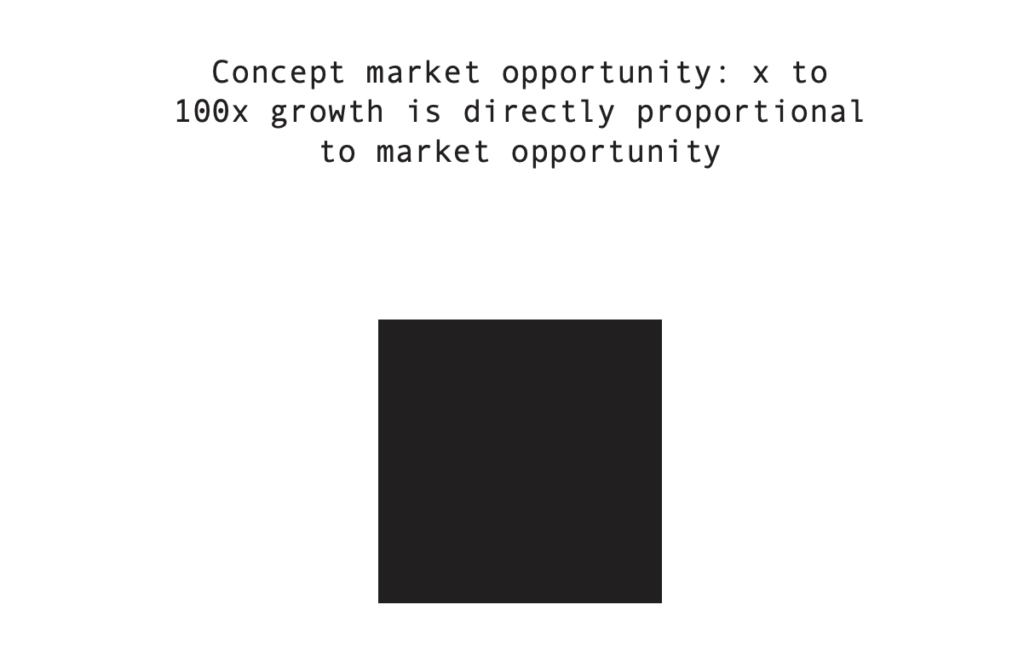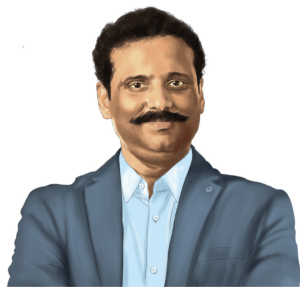Behind any successful organization is a visionary who can sense a future demand for a product from a distance. A product that is indispensable to you today was, in all likelihood, a completely unfamiliar experience a year or two back. And then, there came along someone who sniffed out an opportunity and created something that you obviously needed but didn’t know you did! We talked to some entrepreneurs to find out how they discovered a market for their products. We asked them how they gauged the market, its potential, its prospects before deciding to capture it.
ABHINAV SHASHANK
You have to basically pick up themes as an entrepreneur. Our theme was basically that we are going to create something in the data platform space. At that point we had a conviction that there is going to be an explosion of information, there is going to be a lot of data that enterprises are going to generate, but they will have no idea how to really manage it. Which has probably turned out to be as true as possible. When you see the Snowflake IPO, you realize that the size and scale of that phenomenon are just massive today, and that is what we had as a strong belief. We started building out this data platform.
GIRISH MATHRUBOOTHAM
I did nothing like that. I did not look at the market opportunity, I did not do market sizing, I did not think about product-market fit. But all of that is because I entered a red ocean market. Like customer support software, everybody knows that the market size is big. Every company needs customer support. There are multiple companies Oracle has acquired right now, so multiple companies with hundreds

of millions of dollars of revenue, the TAM (target addressable market) is big, Gartner has published the market size, I didn’t just know how much is that.
When I started, I started like really, let me go and build a fresh helpdesk. It is all about features and how we are going to be different and so on. It is easier to sell a better washing machine than to explain to people the need for washing clothes. And you also know, Pankaj, in my life, when it comes to teaching Java, riding the wave is my DNA. Rather than creating a category, I like to pick a category that is already in full swing and just ride the wave, like a rising tide lifts all boats. This means my strength has to be my execution, not my innovation.
MANAV GARG
I agree with you. That is a very theoretical discussion that some entrepreneurs have that we will sit together and discuss 20 ideas. It always will have to start from a customer problem.
The SaaS wave will accelerate going forward. Of course, not the industries that are deeply impacted. By and large, after every crisis, the automation increases because you want to have self-reliant systems which reduce costs because you won’t have so much money to spend. Cloud waves will accelerate, and you will see many more businesses doing automation, which is where the SaaS will come into place. The future of the work paradigm is going to shift radically, which was a big topic even before this crisis. It will become an even bigger paradigm.
In your online healthcare, if you look at the option of online consultation, that sector is totally going to change. Your entire education [sector] is going to go through massive change. The world over, people are
RATHER THAN CREATING A CATEGORY, I LIKE TO PICK A CATEGORY THAT IS ALREADY IN FULL SWING AND JUST RIDE THE WAVE, LIKE A RISING TIDE LIFTS ALL BOATS. IT IS EASIER TO SELL A BETTER WASHING MACHINE THAN TO EXPLAIN TO PEOPLE THE NEED FOR WASHING CLOTHES. THIS MEANS MY STRENGTH HAS TO BE MY EXECUTION, NOT MY INNOVATION.
– GIRISH MATHRUBOOTHAM
talking about how the supply chain risk has become paramount now. Whether you have a local supply chain or distributor supply chain across the globe, companies will adopt more supply chain software to automate their supply chain even faster, so they can respond to a crisis faster. There are many more fields, but I think SaaS adoption will definitely continue to grow. How the company manages risk factors will have to be considered along with it.
SURESH SAMBANDAM
We were always wondering why rule-engine technology that is supposed to be for non-technical business users, who don’t know how to code but can write business rules, hasn’t fulfilled its original promise. Rule engines are supposed to make rules-based app development simple for them, but, in reality, none of the non-technical users could come near a rule engine because it is so complex that it requires very sophisticated programmers to actually configure it. We said you know what, this is mad, and we saw an opportunity to simplify that. We started a company around democratizing rule-based computing, application development and taking it to the market and that’s really how we founded OrangeScape.
ABHINAV ASTHANA
First, there was a vision of what we wanted to create for ourselves. In those very first days of the Postman tool, we were essentially our own market. Postman was simply built to solve problems that I and some of my colleagues faced as developers.
Then, as more and more people and organizations started using Postman, we were getting all these data points from different companies. It was very data-driven, and we could start thinking about how to monetize this market. We ran some beta tests early on, where part of the product was free, and part of it was paid. Then we started thinking of the highest price point that we would like people to pay—it was not about what people are willing to give us but rather what we would want as payment. We eventually landed somewhere in the middle. So, that was the second part of our journey in terms of defining our market.
Then, as Postman continued to grow, we went to the next level of defining our market. We started comparing the magnitude of the problem we were solving with the alternative ways people solve that problem and how much they spend there. We learned that our “competitor” is typically homegrown API solutions cobbled together in many different ways. Companies pay millions of dollars to developers and for infrastructure to keep those homegrown solutions up. So that was our real market competition—and it wasn’t even another company.
For us, then, it was apparent that we were creating a new market. And we started to closely observe how that new market was growing over time and looking for trends and opportunities. For example, the macro factors benefiting us in this market, things like the growth of API usage, the growth of microservices, or the growth of cloud technologies? If you can index your company onto a macro change that is happening in the world, then you can be reasonably sure that— even if you are sizing up your market relatively low today—the market will grow over time.
SRIDHAR VEMBU
There wasn’t a product like Zoho Creator when we launched it in November 2006. Now, there are some products that came after us. So, we actually ended up pioneering that market where you create online business apps on the web. Similarly, look at Zoho One, which is an “operating system for business”. No one—not even Microsoft, Google, or Salesforce— offers the breadth and depth that we offer, and we are putting all this together. The key questions for us today are: How do you integrate all the data in your organization? How do you enable people to collaborate seamlessly? How do you bring the collaboration part and the data part (like CRM—customer relationship management) together? Today, if you see our product portfolio, we have solved some of it by collaborating with other business tools. In that sense, there is quite a bit of innovation going on here at Zoho. Our goal is to revolutionize the way software is built.
RUSHABH MEHTA
When I started the company, we did the sales part, and India is like a terrible place to sell software. You
WE SAID YOU KNOW WHAT, THIS IS MAD, AND WE SAW AN OPPORTUNITY TO SIMPLIFY THAT. WE STARTED A COMPANY AROUND DEMOCRATIZING RULE-BASED COMPUTING, APPLICATION DEVELOPMENT AND TAKING IT TO THE MARKET AND THAT’S REALLY HOW WE FOUNDED ORANGESCAPE.
— SURESH SAMBANDAM

have heard this over and over again. At one point, a customer had called me for a discussion, and I waited outside the office for two hours. And I decided this is the last salesman thing I am ever going to do. So from now on, I am going to build what is now called SaaS. It will be a 30-day trial: if they want it, they try it, and they take it. There will be no negotiation; I am not going to talk to anybody. It’s ten years of us being a SaaS company. This SaaS was driven thanks to Indian customers being so painful.
MANAV GARG
If you focus on a problem and you focus on the market, you will be able to pick the simplest workflow to which people can adapt faster. You will also determine the basic market needs, and you can start building for that. That is the fastest way to achieve a market fit, in my experience. For example, when I started, I only knew about coffee trading, so I picked a coffee trading use case and made that into a workflow. But soon, we realized that coffee is the same as agriculture, same as metals, same as energy. So then, slowly and adjacently, we expanded the use case into many more markets. To get to product-market fit, you should identify the single biggest workflow which will solve the single biggest problem for the end-user. One single workflow or a software piece—whatever you are building—can focus on one single problem and cut across many more users. That is how you can get to the PMF the fastest.
But not every founder “creates” their market.
ARPIT JAIN
We’ve always kept a close eye on tech trends. When the iPad was launched in 2010, we thought it had immense potential to transform education. We came up with the idea of developing a science program
IF YOU CAN INDEX YOUR COMPANY ONTO A MACRO CHANGE THAT IS HAPPENING IN THE WORLD, THEN YOU CAN BE REASONABLY SURE THAT EVEN IF YOU ARE SIZING UP YOUR MARKET RELATIVELY LOW TODAY, THE MARKET WILL GROW OVER TIME.
– ABHINAV ASTHANA
for kids. This time though, we shifted our target market to the US because India had proved to be a tough market for our first edtech startup. We had already seen how difficult it was to overcome bureaucratic hurdles involved in making even small decisions within the education system. The US was a new market for us; we knew we had to answer a few questions before we got started—need, market size, and potential of disruption.
We believe that the paucity of market research in our first edtech startup was the reason we couldn’t grow fast enough. So, this time, we spent a lot of time doing market research, understanding potential users. We even traveled to the US several times to directly talk to them. We took hundreds of parents and teachers through the mockup of our science app. This process was long and intense but turned out to be super insightful. We realized that, contrary to our assumption, parents were more concerned about their child’s math and reading skills than science. Hence, we decided to build what the users wanted— and pivoted to a math program.
During this time, we also tested parents’ willingness to pay for a digital learning program and their challenges with offline books and tutoring programs. This further enhanced our confidence in the need for the product.
